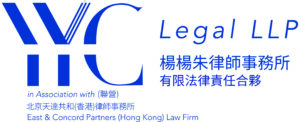A company must showcase its business operations at the time of an IPO, but even after a successful listing it is still required to maintain sufficient operations. The Stock Exchange of Hong Kong (SEHK) issued its revised guidance, in January 2024, on the principles in assessing sufficiency of operations and gave examples of failure to comply with that requirement.
Rule 13.24 of the Main Board Listing Rules and rule 17.26 of the GEM Listing Rules require a listed company to carry out a business with a sufficient level of operations, and assets of sufficient value, to support its operations in order to warrant the continued listing of its securities. This is a qualitative test, as the rule does not set out any numerical standard of revenue, profit, assets or cashflow to prove “sufficiency”. The SEHK makes assessments based on the specific facts in each case.
Negative examples

Partner
YYC Legal
The following paragraphs haved depicted several examples where the company has failed to satisfy the operation sufficiency requirement:
- A listed company maintained only coal trading with annual revenue of USD1.4 million from a few customers. It had acquired coal mine rights but was prohibited from commencing exploration due to regulatory restrictions. It incurred losses, and had total assets of USD2.6 million and net liabilities of USD7.7 million. Plans to improve business operations lacked details.
- A company engaged in retail sales of second-hand motor vehicles saw its revenue drop by 95% in the past five years. It recorded net losses and negative operating cashflows, with total assets amounting to USD6.4 million. It would cease that business and start wholesale distribution of new branded motor vehicles. However, the company’s wholesale business had a short operating history and limited customer base.
- A GEM-listed company ceased its metal trading business, which accounted for 90% of its revenue. It started a number of new businesses with no correlation with one another, and that involved few activities. The company incurred a net loss of USD7.7 million in the past six months and had net liabilities amounting to USD51 million.
- Having substantially scaled down its original fashion accessories business, a company started a new business via acquisition of a company engaging in software and applications development. Goodwill arising from the acquisition accounted for half of its total assets of USD35.9 million. Subsequently, the entire software development team left the company, resulting in suspension of the new business. The auditor issued a disclaimer of opinion on its financial statements due to concerns over the recoverability of the goodwill.
- A company proposed to dispose of its major business to its controlling shareholder, who would in turn sell his entire stake in the company to an investor. The company failed to demonstrate that the remaining businesses were viable and sustainable.
- A company proposed to sell a 25% interest in its main operating company, and granted an option to the purchaser to acquire the remaining 75% interest 24 months later. As the company’s business operations and assets were primarily carried out and held through the operating company, it would not have any material business operations or assets left once the purchaser exercised its option.
- A company proposed to dispose of its construction sector, which accounted for 70% of its revenue and assets. Its other businesses that were acquired or established within the past year had recorded either a loss or minimal profit in the latest financial year.
- A company acquired an advisory services company, then in less than six months proposed to sell off its packaging sector, which has been accounting for its entire revenue and net profit. The revenue of the advisory services company increased by more than 99% shortly before the acquisition and most of the increase came from one client.
Principles of application
The SEHK is more likely to consider the following circumstances as not having sufficient operations:
- The core business of the listed company is discontinued, substantially scaled down or deteriorated. The remaining businesses do not generate enough revenue to offset operating costs, resulting in net losses and negative operating cashflow on a structural, rather than temporary, basis.
- The company proposes to acquire or start a new business with only a short operating history to demonstrate its viability and sustainability.
- Some listed companies carry on their main operating activities merely to maintain the listing status, rather than genuinely developing such business. Common telltale signs include low barrier of entry/exit and limited number of transactions or customers. These can refer to money lending businesses with only a few employees and high concentration of customers, or trading activities that add little to no value to the company.
- Companies in financial difficulty, becoming insolvent, or losing their major operating subsidiaries may cease to have sufficient operations, especially in the absence of concrete turnaround plans.
SEHK assessment process
In assessing whether a listed company has sufficient operations, the SEHK
will consider factors such as its business model, business nature, operating scale, history of existing and new businesses, asset composition, and whether any transfer of controlling stake is proposed.
Nevertheless, a decision of the SEHK’s listing division may be overturned by its listing committee or the listing review committee.
Zhong Ji Longevity Science Group announced, on 25 July 2022, that the listing review committee overturned the listing committee’s decision, which had confirmed the listing division’s assessment that the company failed to maintain a sufficient level of operations. The listing review committee concluded that the company’s money lending business was sustainable and fulfilled the operations sufficiency requirement.
Rossana Chu is a partner at YYC Legal

26 Harbour Road, Wanchai, Hong Kong
Tel: +852 2816 6888
Fax: +852 3797 3835
E-mail: rossana.chu@east-concord.com.hk
www.yyc-ec.com






















